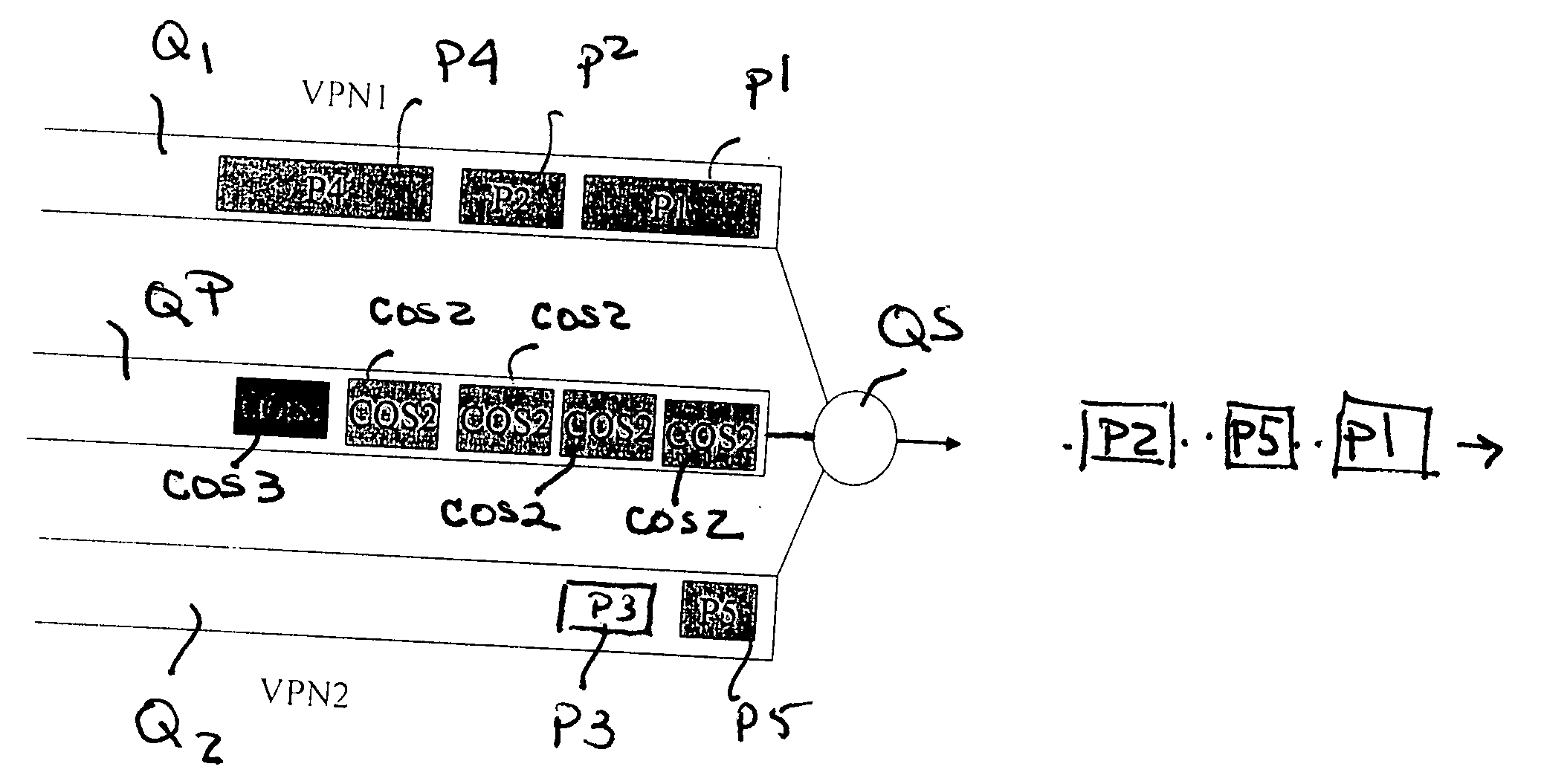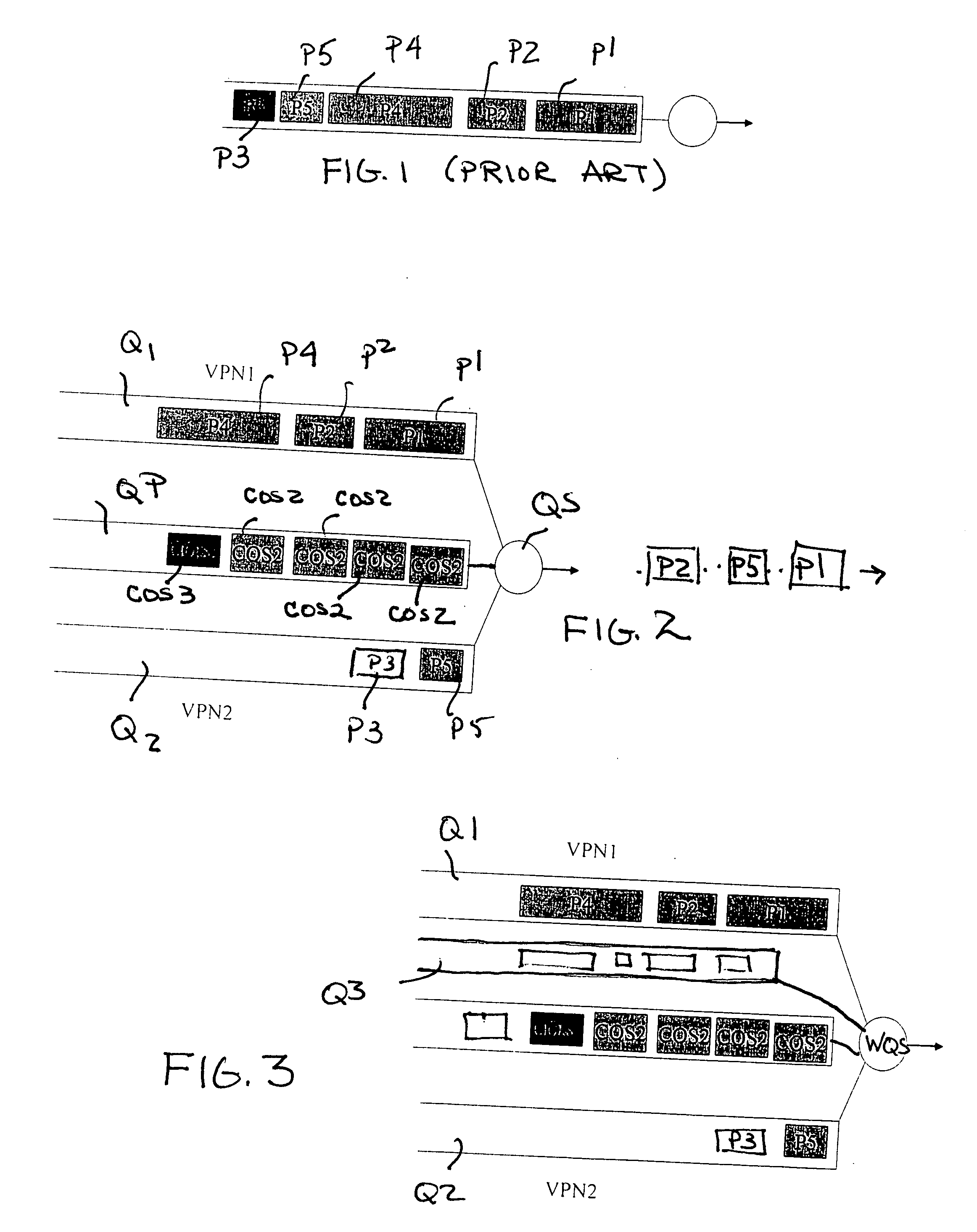Queueing technique for multiple sources and multiple priorities
a queueing technique and priority technology, applied in the field of queueing technique, can solve problems such as traffic jams at various router locations, and no guarantee of “fairness
- Summary
- Abstract
- Description
- Claims
- Application Information
AI Technical Summary
Benefits of technology
Problems solved by technology
Method used
Image
Examples
Embodiment Construction
[0014] As discussed above, the ability to equitably support multiple VPNs (usually with competing traffic of the same “high” priority) through a single router (or any other gating device) is difficult in today's data network architecture. One approach that is currently used to address this situation is “weighted fair queueing”, where each different class of service (COS) is assigned a different weight. Table I, as shown below, is exemplary of one weighting scheme:
TABLE IClass of ServiceWFQ Weight (w)COS20.6COS30.3COS40.1
[0015] It is presumed for the purposes of the present discussion that each VPN sharing a single router generates traffic at the COS2 level. When using the WFQ technique, the scheduled departure time, Fj, for each arriving packet, P, is determined by using as inputs both the arrival time, t0, of the packet and the length, L, of the packet. If there are currently no packets of that class in the queue, the scheduled departure time is calculated by the following:
Fj=t0...
PUM
 Login to View More
Login to View More Abstract
Description
Claims
Application Information
 Login to View More
Login to View More - R&D
- Intellectual Property
- Life Sciences
- Materials
- Tech Scout
- Unparalleled Data Quality
- Higher Quality Content
- 60% Fewer Hallucinations
Browse by: Latest US Patents, China's latest patents, Technical Efficacy Thesaurus, Application Domain, Technology Topic, Popular Technical Reports.
© 2025 PatSnap. All rights reserved.Legal|Privacy policy|Modern Slavery Act Transparency Statement|Sitemap|About US| Contact US: help@patsnap.com


